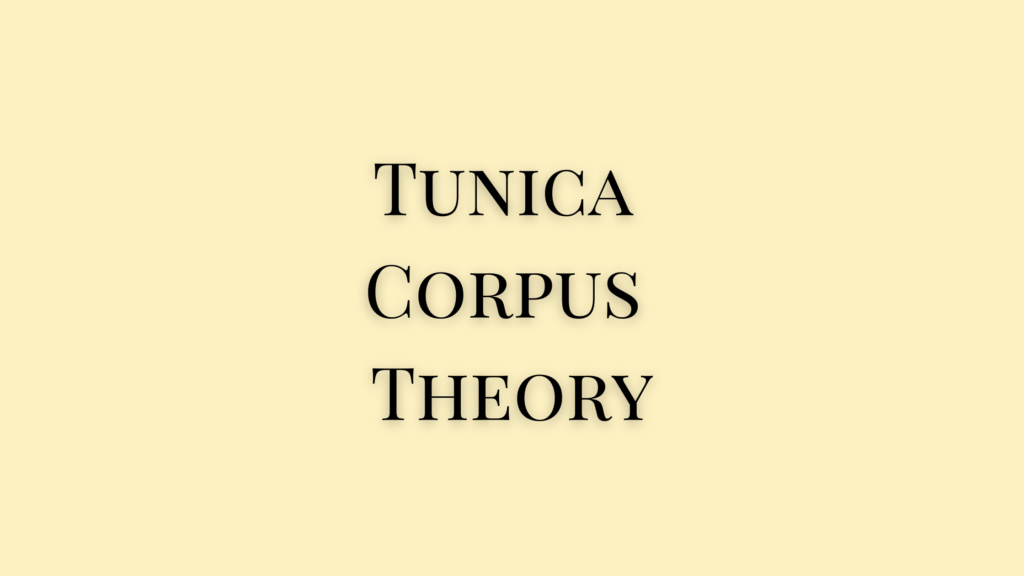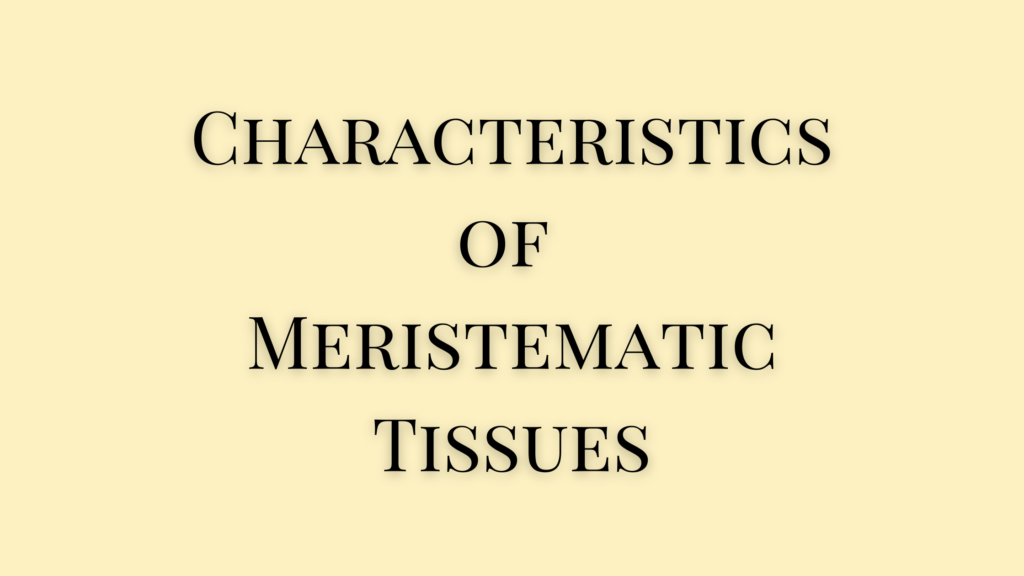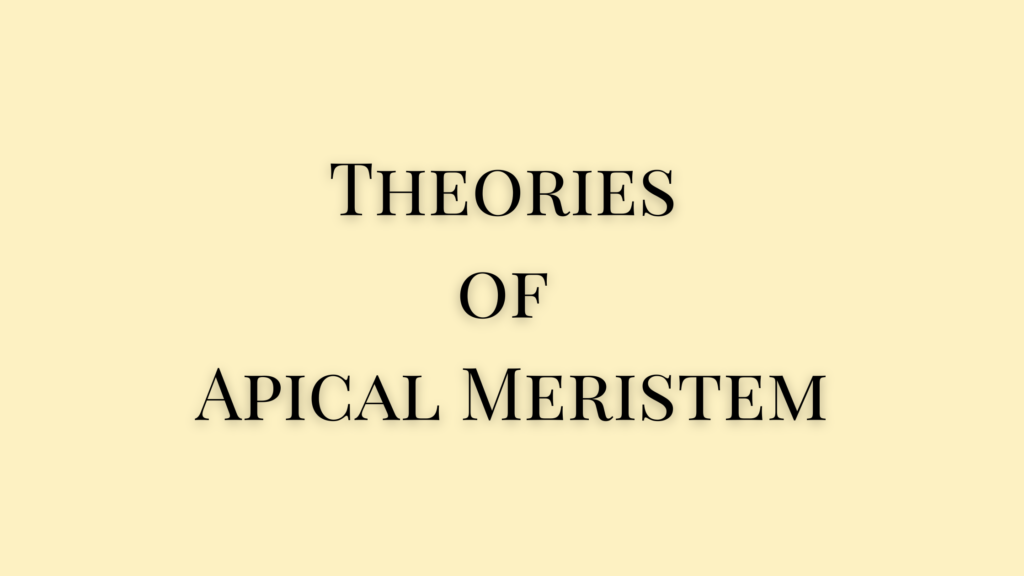The Tunica Corpus theory is an apical meristem theory that applies to the shoot apex. This was proposed in 1924 by Schmidt. According to this Tunica Corpus Theory, two separate zones in the shoot apex form the primary tissues. These two inner and outer zones are called tunica and corpus, respectively.
Tunica Zone
- Tunica is the peripheral tissue zone of the shoot apex.
- It comprises one or multiple layers of cells.
- Most dicots have only two layers in their outer zone.
- Each layer of tunica arises from a group of initial cells. Each tier of the initial cells give rise to each layer of the tunica zone.
- The tunica cells undergo anticlinal divisions to progress with the growth of that area.
- On the other hand, Gifford suggests that most monocots have a single-layered tunica.
There are two cytological zones in the tunica region.
- The central apical zone has few but larger initial cells with bigger nuclei and vacuoles.
- Region on the sides of the apex, located between the initials and leaf primordia.
Corpus Zone
- The corpus zone comprises the central core regions with bigger cells.
- The corpus cells divide in all planes to form a mass of cells that increase its volume.
- While the outermost layer in the tunica forms the epidermis and the inner layers form the cortex, the corpus cells contribute to the stele.
The cytological zonation of corpus zones can be categorized into two groups. The usual and the Opuntia types. The usual type has 3 zones.
- The central mother cell zone, which forms the uppermost zone having the corpus initials
- Pith-rib meristem lying just below the central mother cells
- The peripheral meristem or flank meristem surrounds the other two zones.
The Opuntia type has an additional cambium-like transition zone lying in between the central and peripheral zones. This type of zonation is seen in Opuntia cylindrica, Bougainvillea spectabilis, and Phoenix dactylifera.
Tunica Corpus Theory of Shoot Apex
The Tunica-corpus theory gives a better idea of the growth pattern in the shoot apex. The theory rules out any kind of rigidity between these layers in the apex and other regions of the primary plant body, such as the epidermis, cortex, stele, etc. This is due to the lack of boundaries between the tunica and corpus zones. Moreover, the number of layers in these zones varies with the same plants.
In some plants, the innermost layer of the tunica zone is the outermost layer of the corpus zone. This is seen with the secondary branches. Therefore, there is no clear distinction between the layers of tunica and corpus, both physiologically and morphologically.
Shoot Apex Derivations
- Dermen, in 1947, explained and named the different layers of shoot apex as L1, L2, L3, etc, based on their origin. This is called the histogenic layer concept.
- Popham proposed the mantle core concept that designates two zones that form the outer and inner zones of the shoot system.
- Newman recognized three types of shoot apices: monoplex, simplex, and duplex.
- Monoplex divides in a single plane, as seen in ferns.
- Simplex is seen in gymnosperms that have a single layer formed from one or more initial cells. They divide both anticlinal and periclinal.
- Duplex is seen in angiosperms, where it is double-layered. The outer layer divides the anticlinal while the inner layer divides both the anticlinal and periclinal.
References
- http://www.kaliganjgovtcollege.ac.in/studymaterial/415141st%20sem%20hons%20tunica%20corpus.pdf
- Sukumaran O R. Pre-Degree Botany. Murali Publications.
- Abraham P C. Anatomy, Embryology & Microtechnique. 1999. St. Mary’s Books & Publications.




